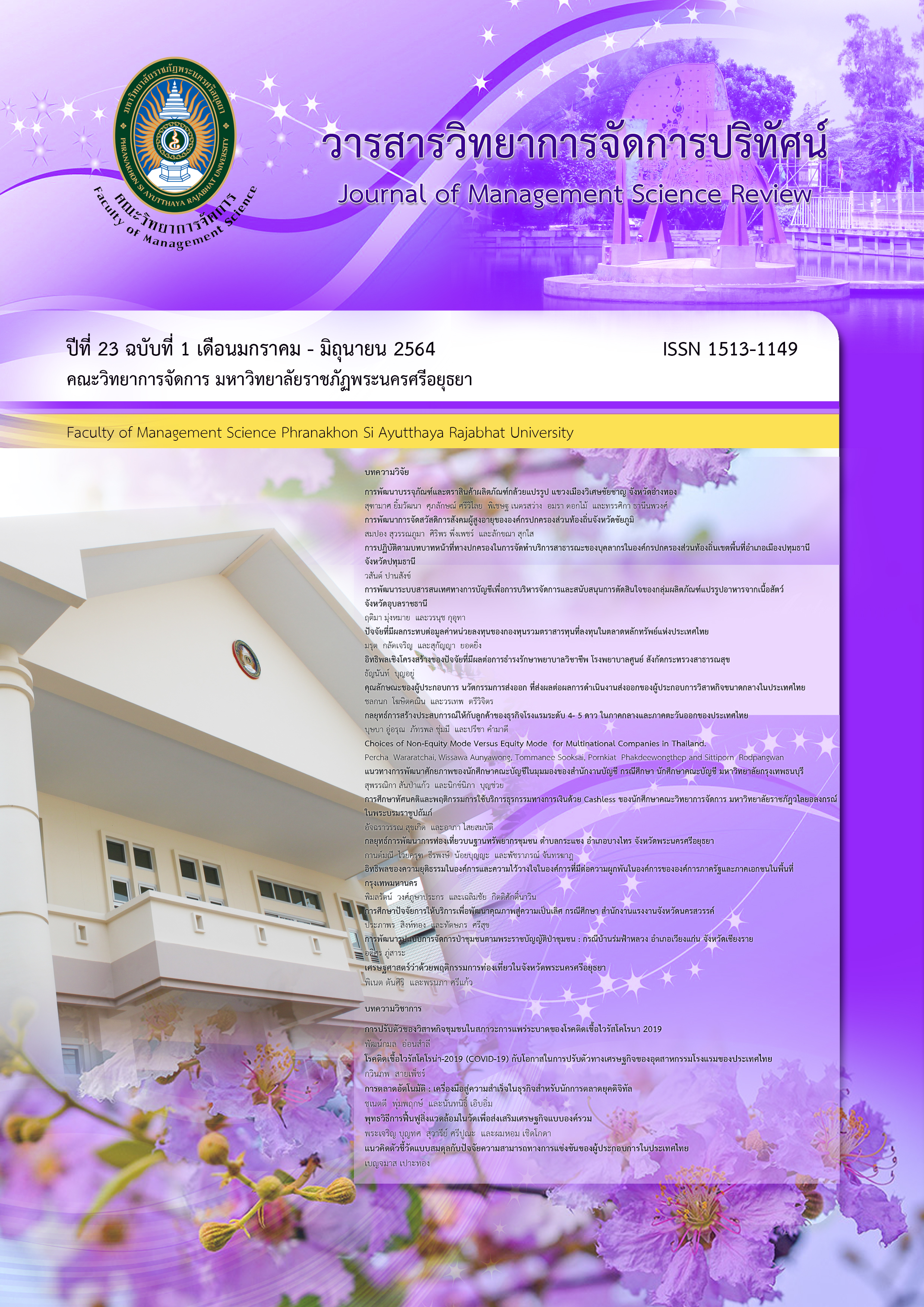A Buddhist Tactic of Environmental Restoration in Temple for Holistic Economy Promotion
Keywords:
Buddha’s methods, Revival, AtipatayataAbstract
Environmental problems are becoming more severe in all areas. Different groups of people and organizations have to find ways to help each other out to solve those problems. Monks in Buddhism are the social and soul leaders who inherit Buddhism, however; religion and nature are the same thing. Some monks are therefore determined to preserve and restore natural resources and environmental pollution to help humans successfully. This article therefore aims to propose a Buddhist method for restoring the environment in the temple in order to promote the creation of a holistic economy according to the BCGModel principle. The Buddhist methods used by monks differ according to the problems and ecology of the temple and the social landscape around the temple. Most of the monks who have been regarded as leaders of change in environmental remediation, most of them use Conditionality (Atipatayata) Principal to point out the natural rules and adhere to the Buddhist methods according to the Buddhadasa Indapanno's style in reviving the environment in 3 ways: using the transmission of dharma principles, using visualization, and sharing benefits as Buddhist methods that can be used as concrete results from environmental restoration in Suan Kaew Temple, Nonthaburi Province by Phra Pihisal Dhammaphadi (Phra Payom Kalayano) who has used the Buddhist method in 3 steps: 1) to preach and teach with the principles of the natural rules of man and the environment that must coexist, use the rules of karma, and have compassion for others, 2) to take action and work together by volunteering with the slogan “Seeing and Doing”, also set up 11 branches Suan Kaew Foundation by using a network of believers to develop and restore natural resources; soil, water, forests and biodiversity in temples and surroundings across the country, as well as, rehabilitate the soil by nourishing the soil by bringing vegetable and fruit scraps to fill the soil surface in the perennial and fruit growing areas. Including the use of bio-fermented water and manure from redeemed life cattle to decompose by turning the soil surface every 6 months until the surface is raised, and then manage water to be sufficient and clean by making water reservoirs. In addition, cultivation of native plants to increase the diversity of both species and the benefits of waste management according to the 3R principle; reuse, recycle, and value-added processing were also conducted, and 3) 3) to give mutually beneficial by arranging distribution centers in the temple and surrounding areas to sell produce from the temple to branches and networks at a cheap price and distribute free vegetables, fruits and plants in order to create jobs and generate income for the poor, resulting in a holistic economic system that is linked by biological products, the transformation of products into commodities (Circular) to Green economy from temples to households and communities in accordance with the BCG Model that aims to balance the economy to grow in harmony with the sustainable environment.
References
กรมวิชาการ. (2551). หลักสูตรการศึกษาขั้นพื้นฐานพุทธศักราช 2551. กรุงเทพฯ: โรงพิมพ์ องค์การรับส่งสินค้าและพัสดุภัณฑ์.
กรมป่าไม้. (2561). สำนักจัดการป่าชุมชน. ค้นเมื่อ 6 กุมภาพันธ์ 2563, จาก http//new.forest.go.th./community-forest-bill/
คุณไม่ใช้...เราขอ” ทน.ระยองกำจัดขยะ. (2563). ไทยรัฐออนไลน์. ค้นเมื่อ 6 กุมภาพันธ์ 2563, จาก https://www.thairath.co.th/news/local/east/1631421.
จิณธกาญจน์ ธัมมะรักขิตา. (2561). การบูรณาการหลักธรรมในพระไตรปิฎกตามหลักพุทธวิธีการสอนของพระพุทธเจ้า. วารสารมหาวิทยาลัยมหามกุฎราชวิทยาลัย วิทยาเขตร้อยเอ็ด จังหวัดร้อยเอ็ด, 8(1), 179-187
ประวรดา โภชนจันทร์, สุวารีย์ ศรีปูณะและปัณณ์รภัส ถกลภักดี. (2562). รูปแบบการจัดการขยะมูลฝอยประเภทบรรจุภัณฑ์พลาสติกชนิดอ่อนตัวในครัวเรือนของชุมชนนิเวศชานเมือง จังหวัดนนทบุรี. วารสาร วิทยาศาสตร์ตชสาส์น, 41 (1), 114-129
พระครูสิทธิธรรมาภรณ์. (2559). บทบาทพระสงฆ์กับการอนุรักษ์สิ่งแวดล้อมในสังคมอาเซียน. วารสารพุทธอาเซียนศึกษา, 1(1), 1-12
พิชศาล พันธุ์วัฒนา. (2559). พุทธวิธีการแก้ปัญหาความเสื่อมโทรมด้านสิ่งแวดล้อม. วารสารวิชาการแพรวากาฬสินธุ์ มหาวิทยาลัยกาฬสินธุ์, 3(1), 100-116
สำนักงานพระพุทธศาสนาแห่งชาติ. (2562). ข้อมูลพื้นฐานทางพระพุทธศาสนา ปี 2561-2563. ค้นเมื่อ 6 กุมภาพันธ์ 2563, https://www.onab.go.th//ebook/category/detail/id/1/iid/2
สุวารีย์ ศรีปูณะ. (2549). การอนุรักษ์และการพัฒนาสิ่งแวดล้อมในชุมชน. (เอกสารประกอบการสอน). เลย:
คณะมนุษยศาสตร์และสังคมศาสตร์ มหาวิทยาลัยราชภัฎเลย. (2562). สิ่งแวดล้อมศึกษากับการจัดการสิ่งแวดล้อมอย่างยั่งยืน. ปทุมธานี: มหาวิทยาลัยราชภัฏวไลยอลงกรณ์ในพระบรมราชูปถัมภ์.
สุวิทย์ เมสินทรีย์. (2562). BCG Model. สำนักงานพัฒนาวิทยาศาสตร์และเทคโนโลยีแห่งชาติ สวทช. ค้นเมื่อ 6 กุมภาพันธ์ 2563, จาก www.nstda.or.th
Schultz, P.W. (2000). New environmental theories: empathizing with nature: the effects of perspective taking on concern for environmental Issues. Journal of Social Issues, 56(3), 391-406. from https://doi.org/10.1111/0022-4537.00174




